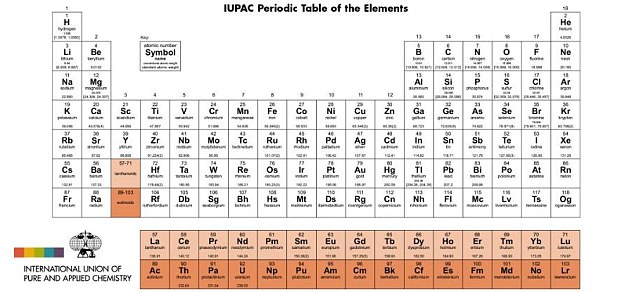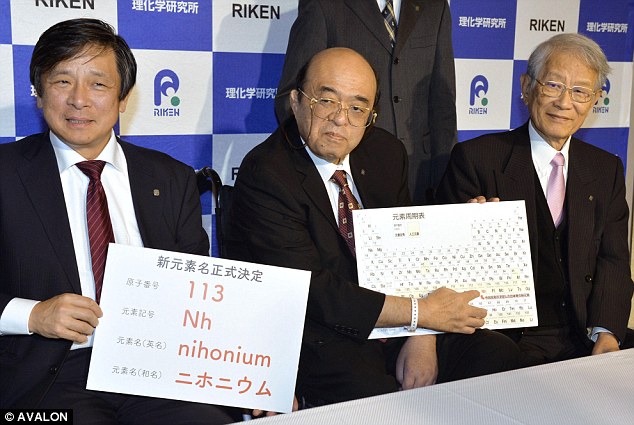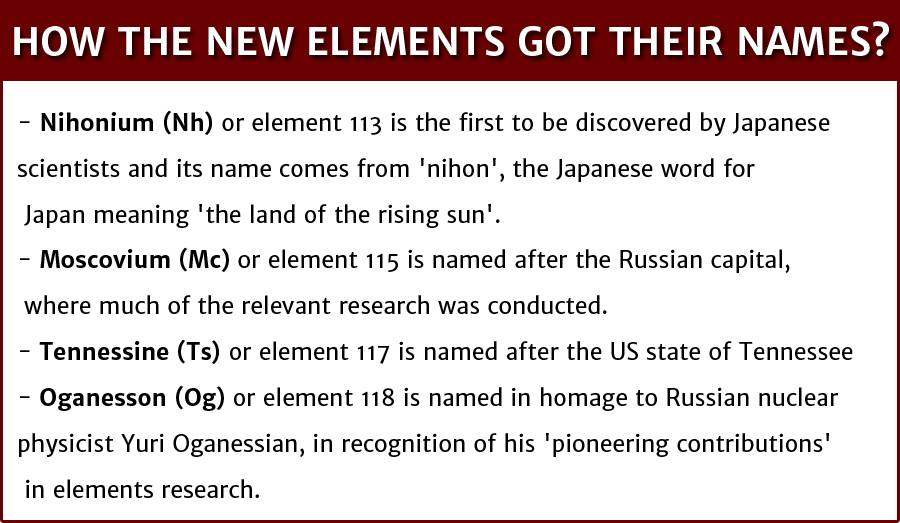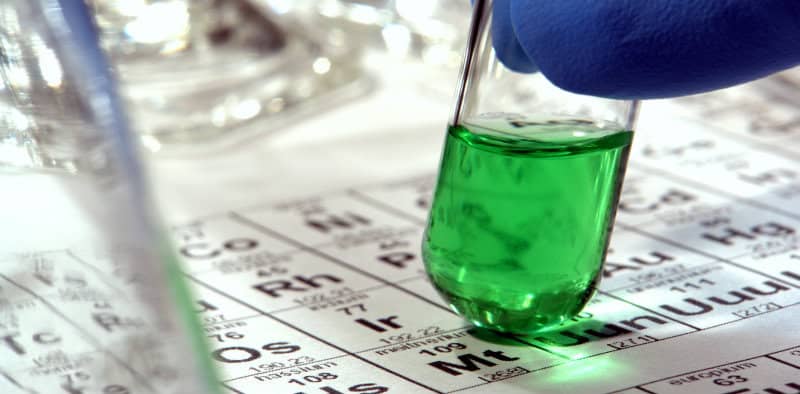ZURICH, Switzerland – Kids will now have to memorize four new elements, as the scientists have expanded the periodic table.
The International Union of Pure and Applied Chemistry has accepted the official names for elements 113, 115, 117 and 118, which it recognized in late December 2015. Previously known by their unappealing placeholder names ununtrium, ununpentium, ununseptium and ununoctium, the elements have been christened Nihonium (Nh), Moscovium (Mc), Tennessine (Ts) and Oganesson (Og), respectively.
The periodic table, pored over by science students the world over, arranges chemical elements in the order of their atomic number.

Some elements, such as hydrogen, carbon or magnesium, are found in nature while others, including nihonium – official symbol Nh – are synthesised in laboratories.
All the discovered elements after 104 are synthetic ones produced through laboratory experiments.
Tradition dictates that newly discovered elements be named after a place, geographical region, or scientist, according to the International Union of Pure and Applied Chemistry (IUPAC), which announced the new names.

North Carolina-based IUPAC said that the names were officially accepted after a 5-month public review period.
“The names of the new elements reflect the realities of our present time,” IUPAC president Natalia Tarasova said on its website, citing the ‘universality of science’ as well as ‘the pivotal role’ of Oganessian.

With the latest discoveries, the periodic table is now complete down to the seventh row.
Underscoring the importance of the discoveries, the scientists behind the four new elements had been seen as strong candidates for this year’s Nobel Chemistry Prize.
Japan has a proud research tradition and its citizens have won about 20 Nobel prizes in science and medicine, including Yoshinori Ohsumi who won the Nobel Medicine Prize this year.














